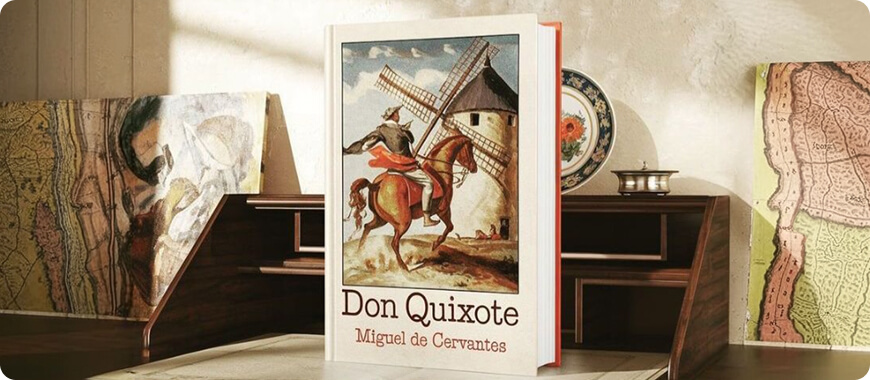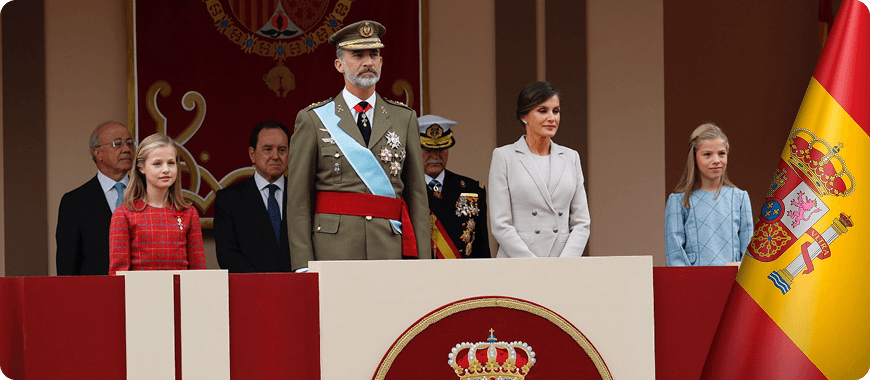Welcome to a world of sunshine, festivals, and fascinating traditions! In this article, we’ll take you on a magical journey through 20 fun facts about Spain that will surprise and delight children while helping them practice English. Whether your child is just starting to learn the language or wants to explore new cultures, discovering interesting facts about Spain is a great way to combine learning with adventure.
Let’s dive in!
Why Learning English Through Spanish Culture Is Fun
Learning a new language doesn’t have to be boring! By exploring amazing facts about Spain, children can naturally pick up English vocabulary while discovering exciting cultural stories. From weird facts about Spain to famous artists and delicious food, every fact becomes a chance to expand their language skills.
At Learnlink, our online platform for English learning makes learning engaging by using real-life themes like these. When children are curious and entertained, they remember more—and enjoy doing it!
Spain’s Most Famous Cities: Madrid and Barcelona
Did you know that Madrid is the capital city of Spain? It’s also the biggest city in the country! Madrid is home to beautiful parks, royal palaces, and some of the best football teams in Europe.
Just a little further east, Barcelona shines as one of the most creative cities in the world. It’s known for its unique architecture, especially the Sagrada Família, an unfinished basilica designed by Antoni Gaudí. This city mixes modern art with ancient history, making it one of the most popular tourist destinations in Spain.
Spain Has Amazing Islands Like Mallorca and Tenerife
When people think of Spain, many imagine sunny beaches — and they’re right! But did you know Spain has over 80 islands ?
Two of the most famous are Mallorca and Tenerife .
- Mallorca, part of the Balearic Islands, is perfect for families with its calm seas and kid-friendly activities.
- Tenerife, located in the Canary Islands, is home to Mount Teide — one of the highest mountains in Europe when measured from its base under the sea!
These islands offer everything from hiking to water parks, and they’re a big reason why Spain is home to some of the most beautiful beaches in the Mediterranean .
Spanish People Love Their Festivals – La Tomatina and More!
If there’s one thing Spaniards love, it’s a good party! One of the wildest celebrations is La Tomatina, held every August in the town of Buñol. During this event, thousands of people gather to throw tomatoes at each other — yes, really!
Another famous festival is San Fermín in Pamplona, where brave (or crazy!) runners try to escape charging bulls in the streets — known as the Running of the Bulls .
There are festivals all year round in Spain, including Carnival, Easter processions, and even falling vegetable fights called La Tomatina de Murcia .
The Official Language of Spain Is Spanish (But There Are Others!)
While Spanish is the official language spoken across the country, there are other languages too! For example:

This means that in some parts of Spain, you might hear different words or even completely different languages being used in schools, TV shows, and everyday life.
It’s a great opportunity for kids to learn how languages around the world can live together in one place!
Famous Spanish Artists Like Gaudí and Picasso
Art lovers will find lots to admire in Spain. Two of the most famous artists ever born here were Antoni Gaudí and Pablo Picasso .
Gaudí designed wild-looking buildings in Barcelona, like Park Güell and Casa Batlló. His work looks like something out of a dream!
Picasso was a painter who helped change the way people thought about art. He created over 50,000 works in his lifetime, including the famous painting Guernica .
Delicious Spanish Food Kids Will Love
Food in Spain is not only tasty — it’s full of tradition! Here are some dishes kids love:
- Paella : A rice dish made with chicken, vegetables, and sometimes seafood.
- Churros con chocolate : Crispy fried dough sticks dipped in thick hot chocolate.
- Bocadillos : Sandwiches filled with ham, cheese, or tuna.
- Helado : That’s ice cream in Spanish — and it’s amazing!
One fun random fact about Spain is that it produces the world’s largest amount of olive oil — over 1 million tons a year!
Spain Is Home to Some Strange and Wonderful Animals
From the cute Iberian lynx to the massive Atlantic bluefin tuna, Spain’s nature is full of surprises.
Here are some weird facts about Spain’s wildlife :
- The Spanish ibex once went extinct but was brought back using frozen cells — science magic!
- Birdwatchers love Spain because it’s home to over 600 species of birds.
- You can find sea turtles laying eggs on Spanish beaches in the summer.
- Spain is also one of the few places in Europe where you can see wild lynxes and wolves living free in nature reserves.
Spain’s Rich History and UNESCO World Heritage Sites
Spain has more UNESCO World Heritage Sites than almost any other country — over 50 in total! These include historic towns, old churches, and even entire forests.
Some highlights:
- Alhambra in Granada — a stunning palace built by Moors.
- Santiago de Compostela Cathedral — a famous pilgrimage site.
- Doñana National Park — a protected area for rare birds and animals.
- These sites help us understand the history of Spain, from Roman times to the age of explorers.
Football (Soccer) Is a Big Part of Spanish Culture
In Spain, football isn’t just a sport — it’s a passion! The national team has won the World Cup and European Championships, and clubs like Real Madrid and FC Barcelona are known all over the globe.
Children in Spain often play football after school or watch matches with family on weekends. It’s a great way to make friends and stay active.
Did You Know? Spain Has Over 80 Million Visitors Every Year
That’s right! Every year, over 80 million tourists visit Spain to enjoy the sun, food, and culture. Spain is the second-most visited country in the world, after France.
Tourists come from all over — Germany, Italy, the UK, and even faraway places like China and the US. They enjoy walking through historic cities, relaxing on golden beaches, and trying local dishes.
Spain’s Beautiful Beaches and Mediterranean Climate
With over 4,964 km (3,084 miles) of coastline, Spain has some of the best beaches in Europe. Places like Costa del Sol, Costa Brava, and the Canary Islands attract millions of visitors each year.
Thanks to its Mediterranean climate, summers are warm and winters are mild — perfect for outdoor adventures any time of year!
Learn New Words with Spanish Traditions and Holidays
Celebrating holidays is a fun way to learn English vocabulary. For example:
- Día de los Reyes Magos (Three Kings Day): On January 6th, children receive gifts from the Three Wise Men instead of Santa Claus.
- Nochevieja (New Year’s Eve): At midnight, people eat one grape for each chime of the clock — if you finish all 12, you’ll have good luck in the new year!
These Spanish Christmas traditions are not only fun but also a great way to learn numbers and customs in English.
Spain Has Its Own Unique Dance Styles Like Flamenco
Flamenco is a powerful dance style from Andalusia, full of emotion, rhythm, and colour. Dancers wear bright dresses, clap their hands, and stamp their feet to tell stories without words.
Learning about Spanish dance styles helps children appreciate music, movement, and performance — and it’s a great topic for English speaking practice too!
Spanish Culture Around the World – From Latin America to Europe
Did you know that more than 500 million people speak Spanish worldwide ? It's the second most widely spoken native language in the world, after Mandarin Chinese.
Spanish is spoken not only in Spain but also in countries like Mexico, Argentina, Colombia, and the United States. So when children learn Spanish culture and language, they're connecting with people around the world.
Fun Fact: Spain Has One of the Longest Lifespans in Europe
People in Spain live longer than in many other countries — over 83 years on average ! This is partly due to healthy food, active lifestyles, and strong family ties.
The oldest person ever recorded was Spanish — María Branyas Morera, who lived to be 117 years old !
Famous Books from Spain – Don Quixote and More
Spain has given the world some unforgettable stories. One of the most famous is Don Quixote, written by Miguel de Cervantes. It’s considered the first modern novel and tells the tale of a man who believes he’s a knight!
Other great Spanish authors include Federico García Lorca and Carmen Martín Gaite. Reading their books is a fun way to improve English while exploring the literature of Spain .
Spain’s National Symbols: The Flag, the Anthem, and the Royal Family
Every country has symbols that represent its identity. In Spain, these include:
- Flag : Red and yellow stripes with the coat of arms on the left.
- National Anthem : "Marcha Real" — one of the few anthems without lyrics!
- Royal Family : King Felipe VI, Queen Letizia, and their daughters.
Kids can learn how to identify the Spanish flag, sing along to the anthem, and discover what life is like for the royal family.
Explore Spain’s Mountains, Deserts, and Forests
Although many people associate Spain with beaches, it also has mountains, deserts, and forests :
- The Pyrenees Mountains form a natural border with France.
- The Tabernas Desert in Almería is one of Europe’s few true deserts.
- The Galician forests are green and misty, like something out of a fairy tale.
These landscapes show that Spain is home to some of the most diverse geography in Europe .
Start Your Spanish Adventure Today with Learnlink
Now that you’ve discovered 20 fun facts about Spain, why not keep learning? At Learnlink, we believe that combining language learning with culture makes English easy, enjoyable, and unforgettable for children.
Whether your child wants to talk about festivals, food, football, or flamenco, our interactive lessons will help them grow their vocabulary and confidence.
Ready to start learning English with fun facts about Spain?
Join today and let your child explore the world through English — one fascinating fact at a time!



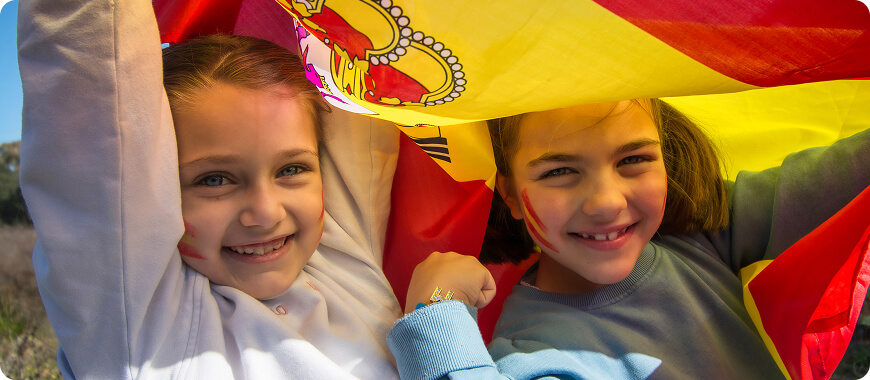
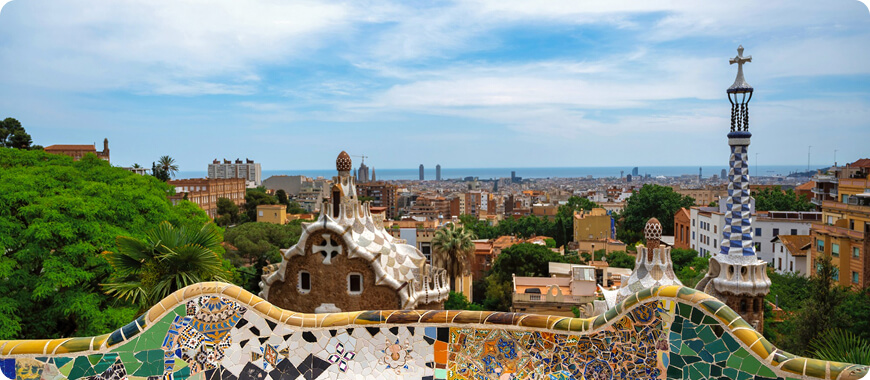
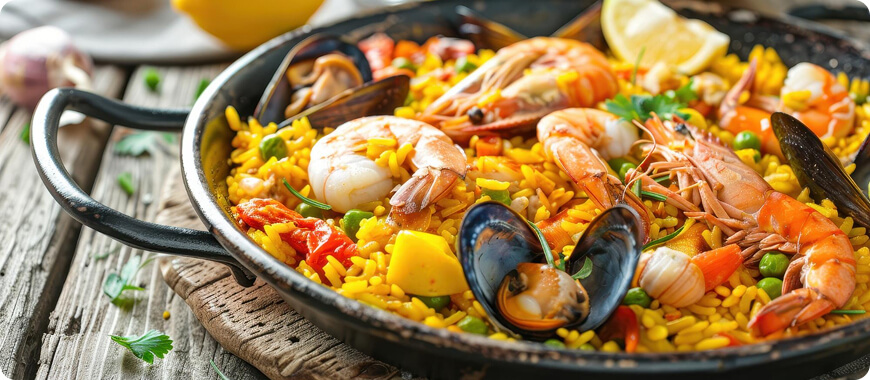
%20Is%20a%20Big%20Part%20of%20Spanish%20Culture.jpg)

